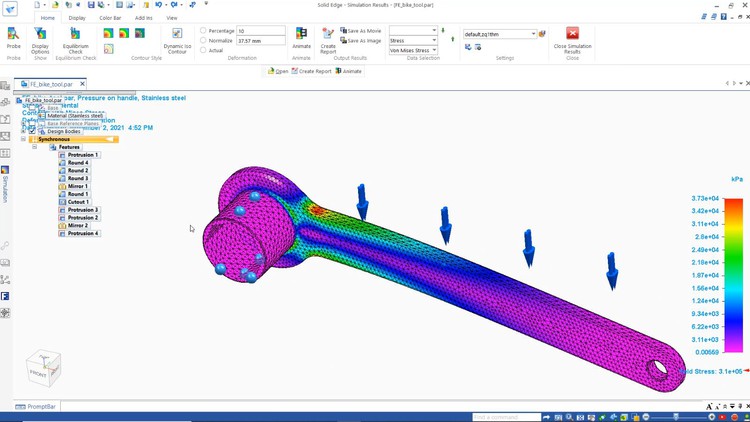
FEA Simulation using Solid Edge CAD Software
What you will learn
Learn what is Finite Element Analysis (FEA), the different type of studies that can be run in Solid Edge, and how to setup a basic FEA study.
Apply FEA concepts to real world examples.
Review and comprehend the analysis results from the study.
Understand how to modify and optimize the models to get better study results.
Description
This course will introduce users to the Finite Element Analysis (FEA) Simulation capabilities in Solid Edge CAD software from Siemens. Users will start with introduction of Simulation, background, and why it is so useful to have Simulation skills or capabilities. The first unit will conclude with an overview of basic workflow involved in setting up and running a successful simulation study. The second unit will introduce users to the basics of Simulation User interface in Solid Edge and all the aspects involved with setting up a simulation study including the Simulation Pane and study status, materials assignment, Geometry and Meshes. Next users will learn about basics of as well as the different types of Loads and Constraint used in Solid Edge. Load are the forces acting on the body in the study and constraints are the restricting parameters on that said body. Any course is incomplete without use of real world examples so users will be able to view the simulation capabilities applied to real world examples such stress on an I-beam, pressures in a tank, torque on a mower hub, etc. After successfully running a simulation study, results are displayed so users will learn how to view the different types of results that can be extracted from study as well as how to interpret those results. Not only will users be working with single part models but assembly models as well in Solid Edge. They will also learn how to optimizes models for easier and quicker simulation results. Finally users will learn how to modify and reuse studies for creating multiple simulation studies quickly.
Content